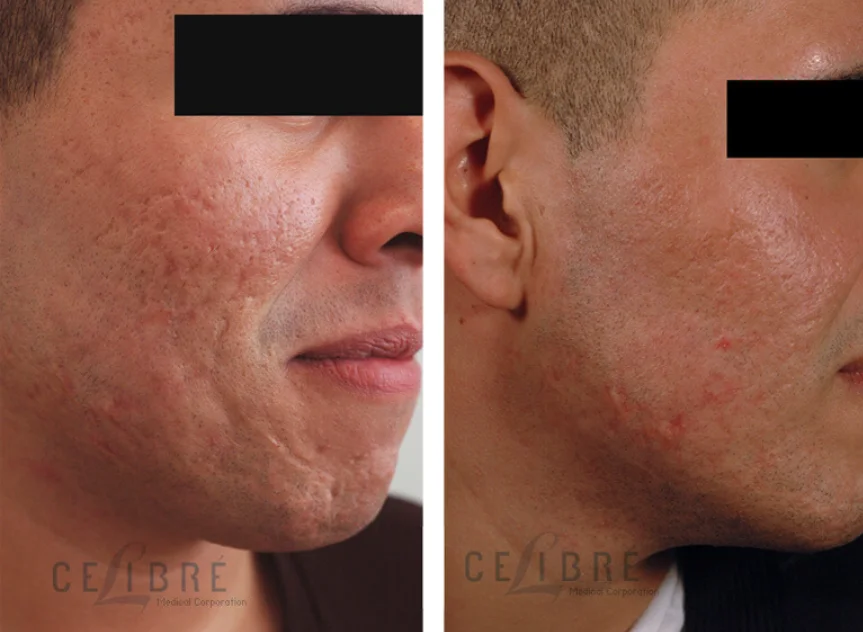Different Lasers for Different Scars
Because there are many types of <strong”>acne scars there is no single laser that can help with all of them. Three types of lasers used to improve or eliminate acne scars include the CO2/Erbium (for textured acne scars), pulse dye (for red acne scars) and q-switched (for pigmented acne scars).

Textured Acne Scars
Erbium/CO2 laser resurfacing is a commonly used treatment for textured <strong”>acne scars. The Erbium and CO2 lasers are designed to resurface the skin by removing the outermost layers or in the case of fractional resurfacing by making small perforations in the skin that remove scar tissue. When the skin regenerates, it develops new collagen that replaces hard, fibrous scar tissue and in the process smooths the texture of the skin. The skin appears smoother and more pliable with a reduced depth and softer edges. Although it is difficult to get rid of textured acne scars altogether, they can be greatly improved with CO2 and Erbium lasers. With several laser resurfacing treatments, textured acne scars can be improved between 25% and 75% on average. Improvement depends on depth of scars, age of scars, age of the patient and the number of treatments.
Red & Brown Acne Scars
Pigmented acne scars are treated with different lasers based on their color. In lighter skinned individuals, pigmented acne scars are usually red. They are created by a healing response that brings small blood vessels to the site of the injury. In darker skinned individuals, this same healing response leads to darker acne marks by bringing melanin (the body’s natural pigment) to the site of the injury. Using heat generated by pulsed dye and q-switched lasers, we are able to eliminate the redness or darkness associated with the two types of colored acne scars. The pulse dye laser is attracted to hemoglobin in blood. When used to treat red acne scars, it closes the small blood vessels developed during the healing response, thereby decreasing the redness. In the case of dark skinned individuals, the q-switched laser heats up the melanin (temporary post inflammatory hyper-pigmentation or PIH) that was brought to the site during the healing process. The heat energy of the laser breaks down this excess pigment and allows it to be carried away from the site of the acne lesion, which reduces the appearance of the mark.
Non-Laser Acne Scar Options
Besides laser treatments, there are several other options for acne scar treatments, including subcision with dermal filler injections, punch excision and dermabrasion (not microdermabrasion).

